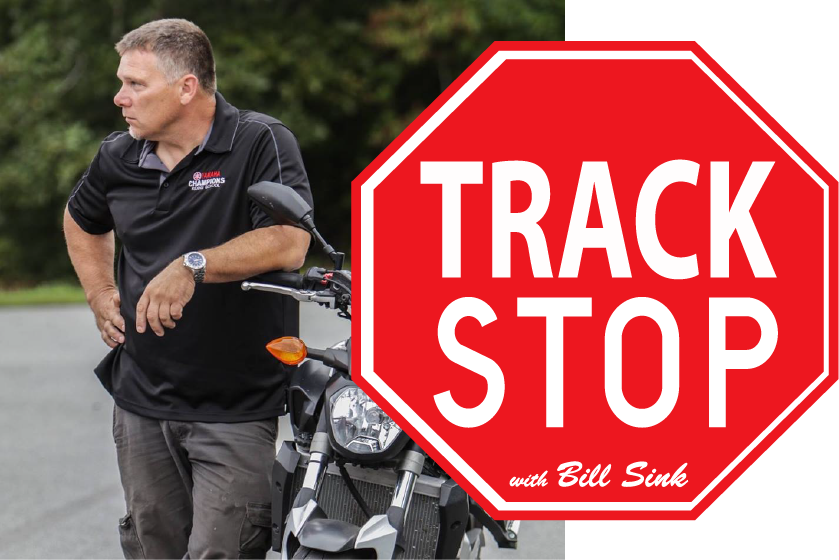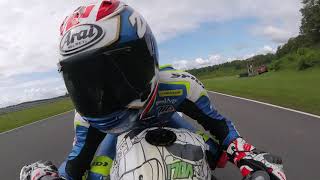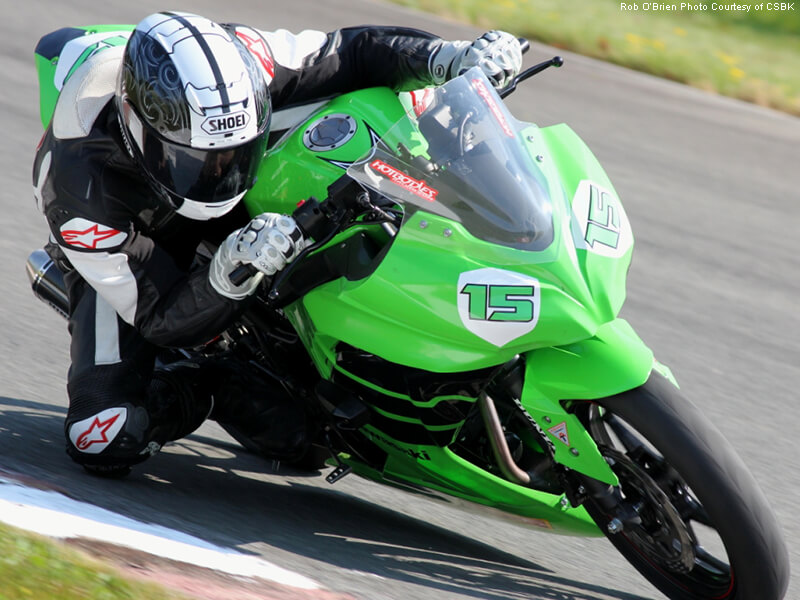As we’re all slipping into hibernation mode and constantly doing laps in our heads, waiting for the new season to begin, let’s STOP and discuss other approaches to some of the corners that continually challenge us.
Today, let’s stop at Turn 2 NCBike. Turn 2 is an extremely late apex that keeps you on the side of the tire for a loooooong time (lean angle is a risk and is what we preach at YCRS). So, let’s see if we can limit the time we spend at maximum lean angle.
I see a lot of riders taking the classic late apex approach, starting wide and slowly tightening up until the apex is reached. This approach makes the slowest point of the corner early and keeps us at risk for the entire corner. Let’s try a different approach, one that allows us to be on the brakes deeper through the corner and let’s get that slowest point in the corner closer to the apex.
Here’s another approach: The Double Apex. Well kind of, sort of. What are the benefits and problems in taking this approach? By having another apex early to shoot for, we can be more upright using less lean angle and can use more brakes deeper into the corner, causing the slowest point of the corner deeper, almost 3/4 of the way around. This also allows us be at maximum lean angle for a short amount of time. By using your brakes for direction change, you waste less time and distance. Another benefit of this approach is by having the slowest point deeper in corner. You just made the straight from Turn 1 to 2 longer.
Wow, all these benefits! So, what can be the problems of this approach? By making this a true double apex, your direction change point, the slowest point of this particular turn, can be “pointy” and can cause us to over slow the bike to get the direction change made. This is where the “kind of, sort of” double apex comes in. In order to soften up the pointiness of the direction change, we can leave room at our first apex by not apexing at the edge of the track. This will make your approach much easier and allow more momentum and speed to be carried through corner.
And for you “little bike” guys and gals, the smaller the bike, the wider the first apex becomes to ensure no “pointiness” at the direction change, and small bikes can’t afford over-slowing where direction change is. Watching Brandon go through this turn almost looks like a combination of the two, Damn kids today — Haha!
Next week, let’s discuss a turn or two at NYST, New York Safety Track!




